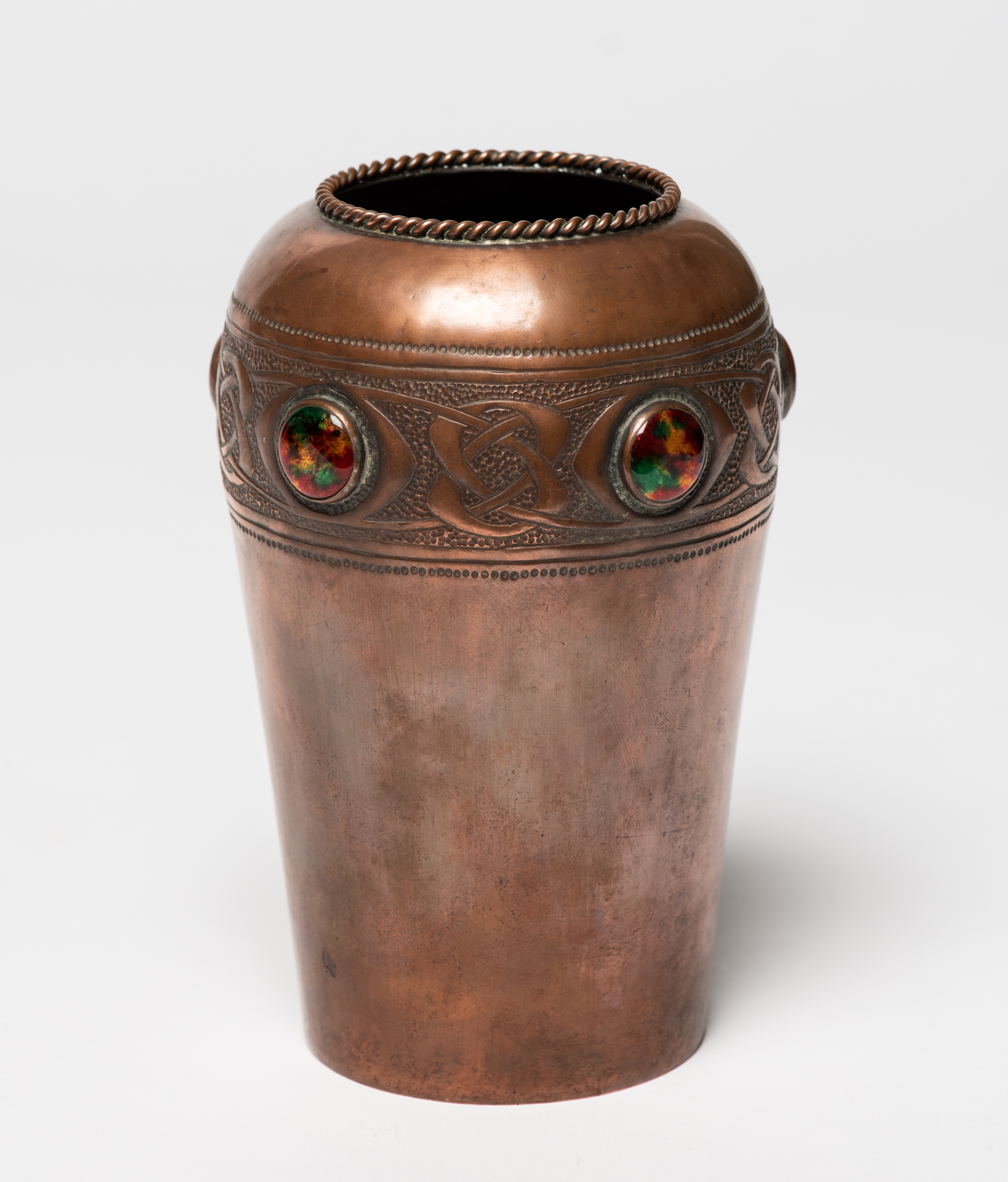Walton on Ellis
CAM’s decorative arts collection is a proud component of our museum collection, much admired by staff and visitors alike. Melinda Harper, too, has selected many items by Stan Ellis to include in her upcoming In Conversation exhibition. In this week’s Reflection, Castlemaine-local Robyn Walton examines the influences on, and influence of, Stan Ellis and his enamelware.

Walton on Ellis
When I ventured downstairs on my first visit to Castlemaine Art Gallery and Historical Museum, as CAM was known in 2014, I discovered some appealing decorative arts objects. The pieces that stayed most strongly in my memory were handcrafted in the British Arts and Crafts style, and made from metal ornamented with enamel. They dated from the first half of the twentieth century, were attributed to Stanley J Ellis, and were displayed in cabinets with some more-recently made objects continuing the tradition.
These days I live in Castlemaine and am happy to know items from CAM’s Stan Ellis collection remain proudly on display. Ellis is worth knowing about, not only for his decorative domestic objects but as a significant contributor to arts education in this region, learning and teaching at Castlemaine Technical School for 50 years, from 1914 to 1964.
This Reflection focuses on two copper pieces—a platter (with copper stand), and a vase—that show off Ellis’s precision in the crafts known in his day as “art metal work” and “art enamelling”. At present, these objects cannot be dated any more accurately than 1930–59. It’s known that Ellis studied enamelling in the 1930s under Ernest H Duncan. And he was already teaching art metalwork then; one of his students in the mid-1920s had been Dorothy Leviny of Buda renown.
Ellis’s platter has a diameter of just over 30cm and its broad outer band is ornamented with alternating fretwork and enamelled kidney-shaped discs. The tapering vase carries a repoussé (beaten) band with alternating Celtic knots and round enamelled discs. Barley-twist edgings are used on each object. The platter (which might also be regarded as a charger or wall plate) sits on its own handcrafted copper stand.
The enamelled discs, which Ellis called “spots”, would have been less expensive to apply than cabochons, which are opaque gemstones worked into a convex shape and polished. Enamels (ground glass coloured with metal oxides) melt under high-temperature firing, fusing to the metal they have been applied to; copper is regarded as the best carrier for enamel. Successive applications of differing colours and textures produce variegated effects. CAM’s exhibit includes Ellis’s hand-lettered instructional material showing the stages of creating a spot.

Although Ellis is named as these objects’ designer, he was not innovating. The designs of the platter and the less showy vase were chiefly influenced by objects made in Britain around 1900 and in the following decade. The sinuous lines of the platter’s handcut fretwork also suggest the influence of Art Nouveau.
Ellis presumably saw photographs in retail catalogues and art journals or inspected imported examples of the Arts and Crafts and Art Nouveau–influenced wares sold by Liberty & Co. And he may have known comparable English regional or Scottish products. In Glasgow, for instance, the Gilmour sisters’ Gilmour Studio produced circular alms dishes in brass with enamelled discs, Celtic knots and repoussé work. And, on the Western Isle of Iona, Alexander and Euphemia Ritchie made similar platters through the Edwardian era. Decorative work of the same kind also appeared on trays and frames. It’s possible Ellis also saw objects made by members of Australia’s state and regional craft associations, which in this country extended the popularity of the Arts and Crafts style into the 1920s, whereas in Britain it waned after World War I.
Castlemaine’s relatively small scale and its location outside the city made it a suitable environment for Ellis and his students to make objects in a style that, from its inception, had been nostalgic for old handwork techniques, rural customs and country living, but also valued rail and road access to bigger centres for the purposes of display and sale.
Robyn A. Walton
March 2021